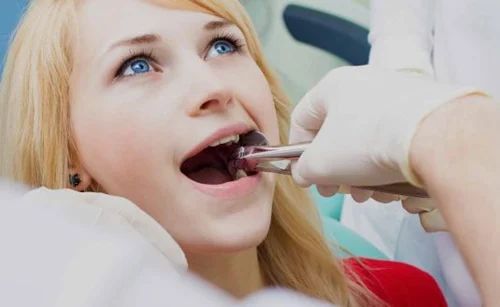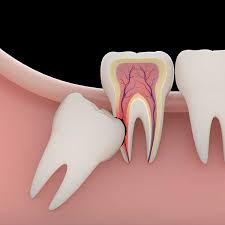Understanding the Process of Tooth Extraction

Tooth extraction is a procedure that removes a tooth from its socket in the bone. It is generally recommended when a tooth becomes damaged beyond repair, or when there is overcrowding. The process begins with a dental assessment where the position and condition of the Tooth extraction cost are examined. Depending on the complexity of the case, the procedure may be classified as either simple or surgical.
Reasons for Extraction
Various oral health conditions can lead to the need for a tooth to be removed. These include severe tooth decay, trauma, gum disease, or impaction. Sometimes, teeth are removed in preparation for orthodontic treatment to create necessary space for proper alignment.
The Role of Dental Imaging
Dental imaging plays a significant role in planning the extraction. Radiographs allow dental professionals to assess the root structure, surrounding bone, and alignment. Proper imaging ensures precision and safety during the procedure, helping to anticipate any complications.
Preparation Before the Procedure
Initial Evaluation
Before undergoing the procedure, a thorough evaluation is performed. This includes a review of the individual’s dental and medical history. The condition of the surrounding teeth and gum tissues is examined to create a suitable plan for removal.
Patient Instructions
Clear instructions are provided before the extraction. These may include dietary adjustments or preparation steps to ensure a smooth process. Following these guidelines contributes to better outcomes and helps the dental team conduct the procedure efficiently.
Types of Tooth Extractions
Simple Extractions
Simple extractions are performed on teeth that are visible in the mouth and usually done under local anesthesia. These procedures are generally quick and uncomplicated, involving loosening the tooth with specialized instruments and removing it from the socket.
Surgical Extractions
Surgical extractions are more complex and involve teeth that are not easily accessible. This might include teeth that are broken off at the gum line or those that have not fully erupted. A surgical approach typically requires creating an incision in the gum and may involve sectioning the tooth before removal.
Role of Anesthesia
Anesthesia is used to minimize discomfort during the process. Local anesthesia numbs the area, ensuring a pain-free experience. In more complex cases, other sedation methods may be employed depending on individual needs and preferences.
Factors That Influence the Procedure
Tooth Position and Alignment
The position of the tooth significantly affects how the extraction is performed. Teeth that are tilted, rotated, or impacted may require additional steps for safe removal. The alignment of adjacent teeth also plays a part in planning the procedure.
Condition of Surrounding Tissues
Healthy gum and bone tissue make the process smoother. If there is any infection or inflammation in the area, additional care may be necessary. The overall health of the mouth contributes to the efficiency and ease of the extraction.
Number of Teeth Involved
In some cases, more than one tooth may need to be removed. When multiple teeth are extracted at the same time, it requires careful coordination and planning to ensure proper healing and function post-procedure.
Tools and Techniques Used
Instruments for Simple Extractions
Basic tools include elevators and forceps designed for specific parts of the mouth. These instruments allow precise movement and application of force to loosen and remove the tooth with minimal damage to surrounding tissues.
Techniques for Surgical Removal
Surgical instruments include scalpel blades, retractors, and dental drills. When required, bone may be removed or tooth sections divided to facilitate easier extraction. Modern techniques aim to reduce trauma and encourage efficient healing.
Safety and Sterilization
All tools and instruments are sterilized before use to maintain hygiene. Strict protocols are followed to ensure safety and minimize the risk of infection. Clean environments and proper handling of instruments support a successful outcome.
What to Expect During the Procedure
Timeline and Duration
The duration depends on the complexity of the case. Simple extractions can be completed quickly, while surgical procedures may take more time. Regardless of the duration, patients are kept comfortable throughout the process.
Steps of the Extraction
After administering anesthesia, the area is carefully prepared. The tooth is loosened and removed, sometimes in sections if needed. After removal, the socket is cleaned and gauze is applied to manage bleeding.
Communication with the Dental Team
Throughout the procedure, communication is maintained to ensure patient comfort. Any concerns or sensations are addressed promptly. The team works in coordination to deliver efficient care and a calm experience.
Recovery Expectations
Immediate Post-Procedure Reactions
Some pressure and tightness may be felt once the anesthesia begins to wear off. Minor swelling is common depending on the difficulty of the extraction. These reactions are normal and temporary.
Instructions for Rest and Healing
After the procedure, it’s important to rest and allow the body to recover naturally. Following guidance provided by the dental team helps reduce discomfort and supports the healing of the affected area.
Importance of Oral Cleanliness
Maintaining a clean mouth is essential during the recovery period. Gentle rinsing and avoiding contact with the extraction site help prevent irritation. A balanced routine supports tissue regeneration and gum restoration.
Long-Term Oral Health Considerations
Tooth Replacement Options
If a tooth is removed, some individuals may explore restorative options in the future. Replacing a missing tooth can help with chewing, speaking, and maintaining the alignment of other teeth. Decisions on this are made after full healing.
Gum and Bone Changes
Over time, natural changes may occur in the area where the tooth was removed. These include shifts in gum tissue and adjustments in bone structure. Monitoring these changes helps ensure continued oral wellness.
Preventing Future Issues
Regular dental care plays a role in avoiding the need for future extractions. Daily hygiene practices combined with periodic assessments help in catching problems early. This proactive approach supports the longevity of the remaining teeth.
Choosing the Right Approach
Personalized Dental Care
Each case is unique and requires a tailored approach. Dental professionals consider various factors including Tooth extraction cost in Dubai location, overall health, and personal preferences when planning the procedure.
Value of Consultation
Consulting a professional ensures clarity and preparation. It provides an opportunity to ask questions and understand what to expect. A well-informed individual is better equipped to proceed with confidence.
Commitment to Oral Wellness
A commitment to oral wellness goes beyond one procedure. Practicing good habits, attending routine visits, and addressing concerns early contribute to a lifetime of healthy smiles.

